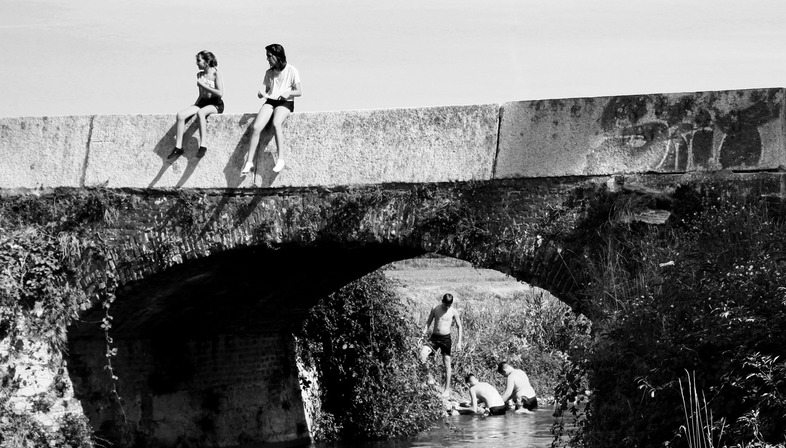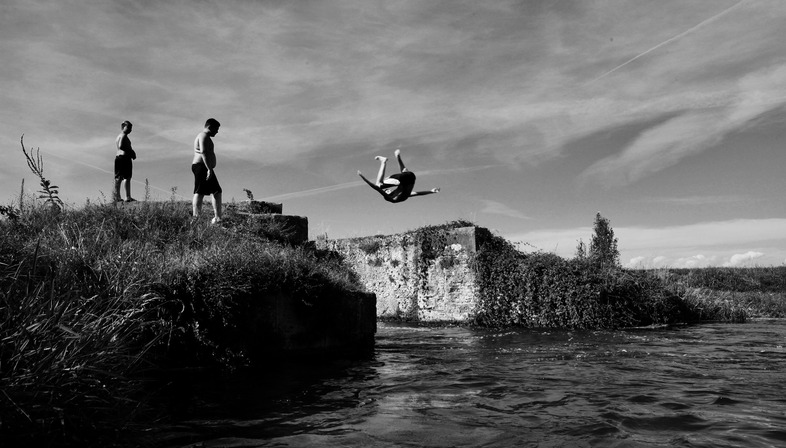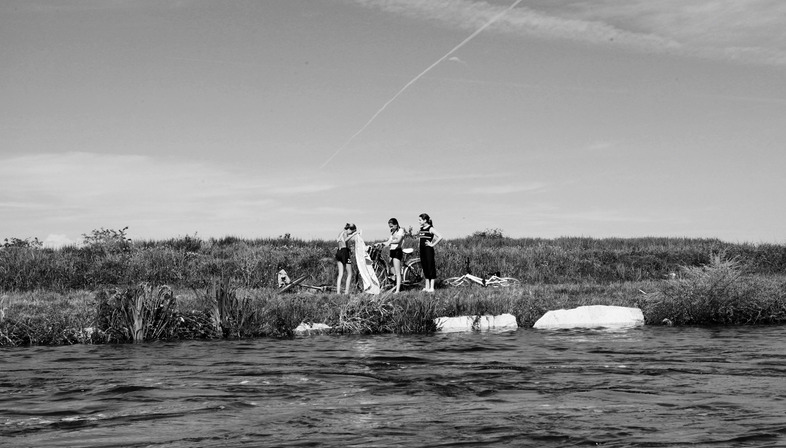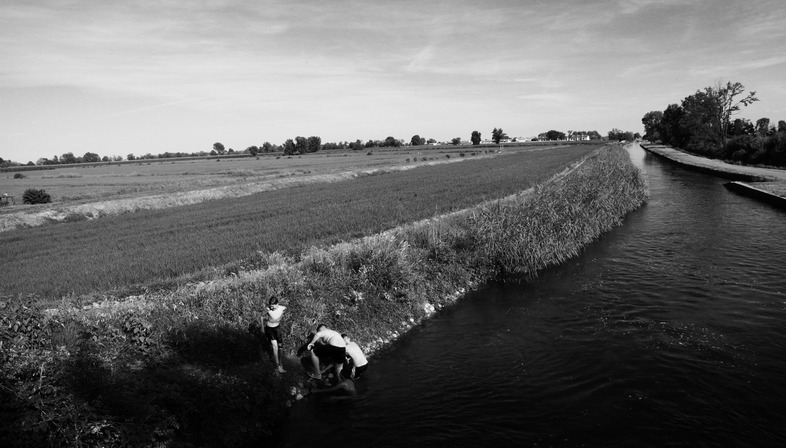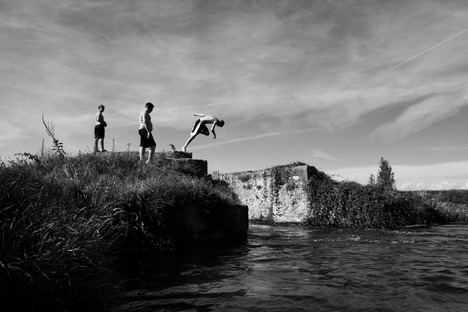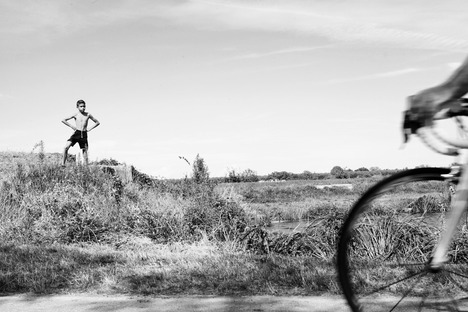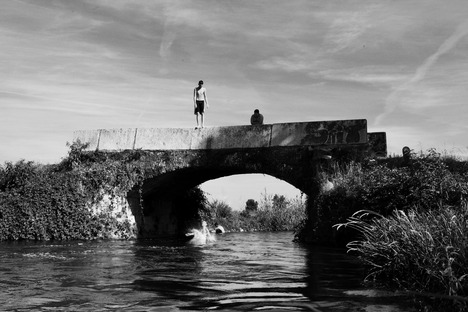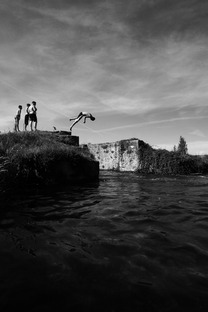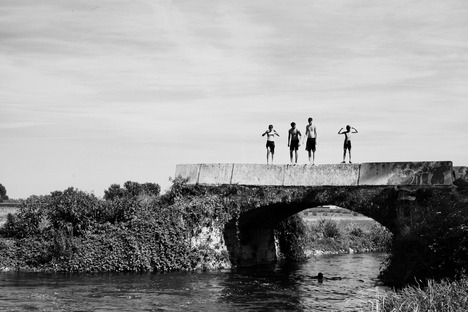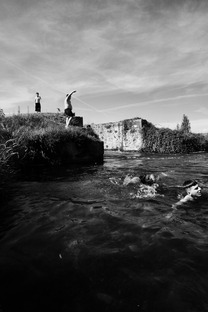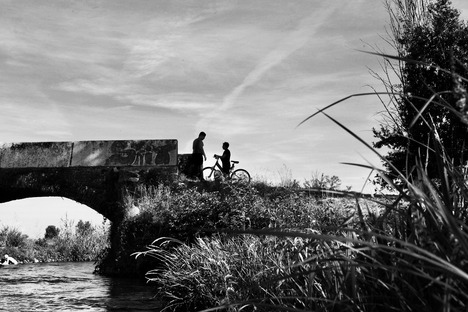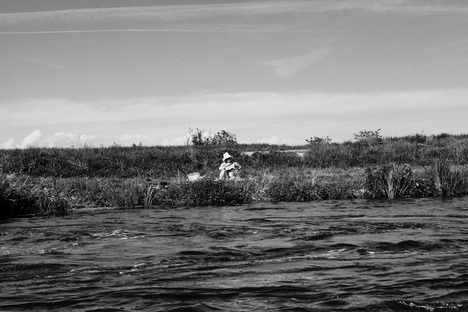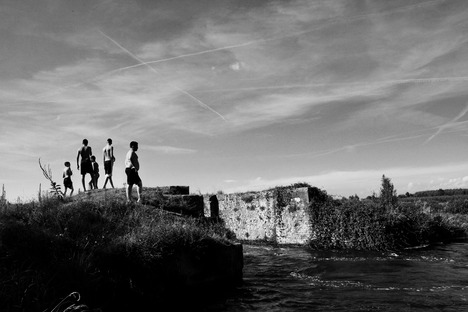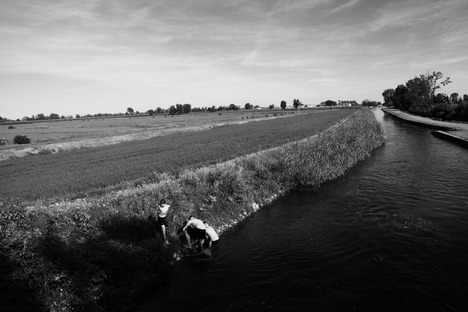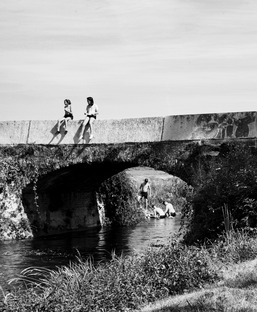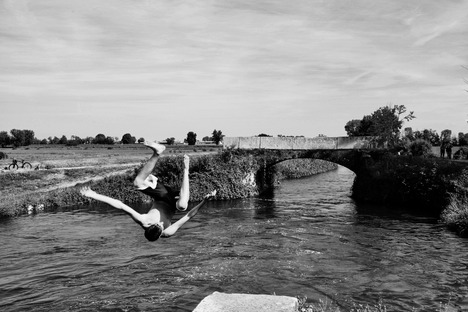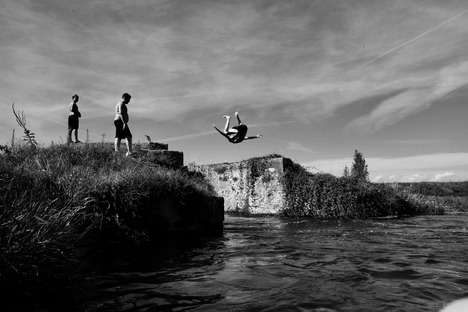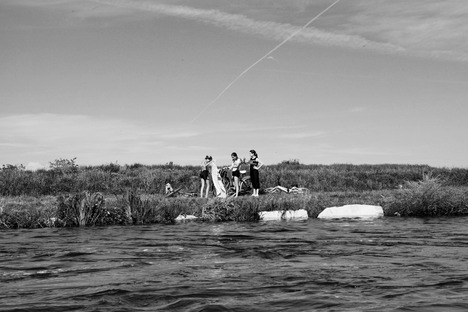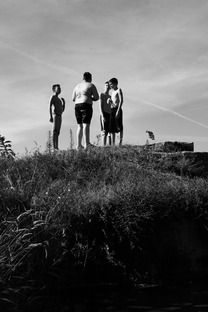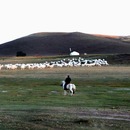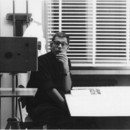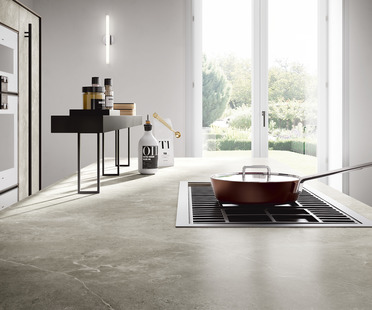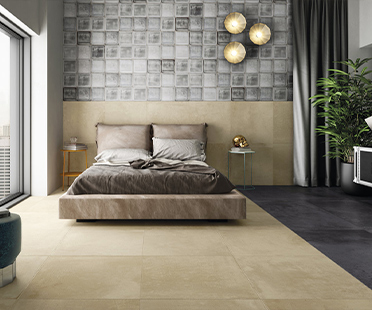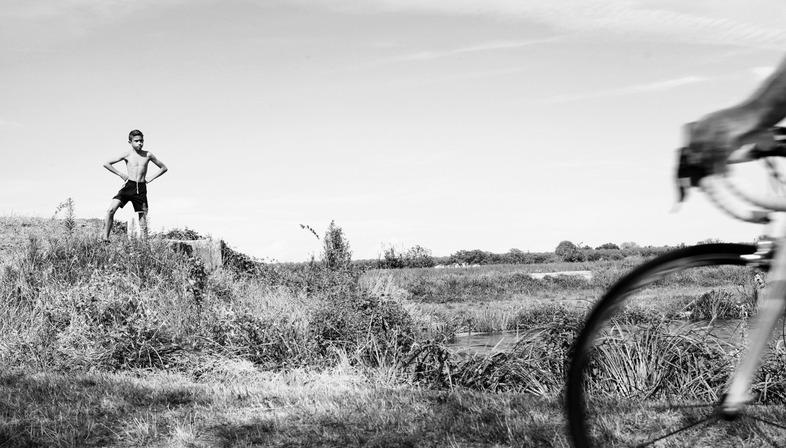 Today more than ever we seem unable to find a common ground for a compromise with time, haunted by the speed and intensity that our daily life has become accustomed to. Obsessed and distressed by increasingly convulsive rhythms, inextricably connected by technology, we are constantly bridged by a different timezone from one webinar in America to a streaming meeting in Asia, dominated by an uninterrupted need to communicate, always underlined with a tone of urgency, emails that cannot be postponed, whatsapps, calls, followups. The bombardment of information, the series of appointments, or rather the overlapping of conferences, seminars, weekly events, make it absolutely impossible for us to follow everything except on an extremely superficial level. From the discomfort of this distressing situation a widespread mantra arises that seems to resonates louder and louder, the appeal for a slowness more suited to our holistic wellbeing, a slowness without which we will not be able to recover a sustainability that the pandemic has proven to be of vital importance.
Today more than ever we seem unable to find a common ground for a compromise with time, haunted by the speed and intensity that our daily life has become accustomed to. Obsessed and distressed by increasingly convulsive rhythms, inextricably connected by technology, we are constantly bridged by a different timezone from one webinar in America to a streaming meeting in Asia, dominated by an uninterrupted need to communicate, always underlined with a tone of urgency, emails that cannot be postponed, whatsapps, calls, followups. The bombardment of information, the series of appointments, or rather the overlapping of conferences, seminars, weekly events, make it absolutely impossible for us to follow everything except on an extremely superficial level. From the discomfort of this distressing situation a widespread mantra arises that seems to resonates louder and louder, the appeal for a slowness more suited to our holistic wellbeing, a slowness without which we will not be able to recover a sustainability that the pandemic has proven to be of vital importance.In this globalized world, pushed to be in a perpetual motion, between continuous trips, hopping from plane to plane, for the first time we found ourselves in a decidedly anomalous situation of forced immobility, anchored to a place. From an initial desperation, convinced that we could not live without the usual routine, gradually took over the pleasure of rediscovering apparently insignificant activities and fulfilments on which we had not focused for a long time: I started making cakes again, as a child with my mother, I unexpectedly had time to exchange small favors with my neighbor. We helped each other and it gave me so much comfort during months when I didn't have any of my family close by.
After the emergency, when the fear has slightly subsided, I felt the desire to gradually return back to life, without staying all day closed in my small attic and I began to venture with my bicycle along unexplored paths, first a few kilometers from home and then further and further away. I had, a while ago, the opportunity with friends to do an excursion outside Milan, to an area near the Navigli that had impressed me, remaining in my heart, and I would have liked to photograph. So I studied how to return there and on a particularly hot Sunday in July I left the city for the countryside of Abbiategrasso. I cycled for an unlikely amount of kilometers, maybe over fifty, and as every trace of urbanized backdrop disappeared, extensive planes of fields opened up to me and a view that didn’t make me feel tired but stimulated me to relentlessly continue in search of more and more magical corners.
Naviglio Grande. Photo Virginia Cucchi.
The Navigli are a complex intersection of artificial canals that as arteries cross and connect around Milano, branching out different zones of the province, weaving together meeting points with the Ticino and Adda Rivers which flow into Lake Maggiore and Lake Como. Originally used for navigation and as an infrastructure for the transport of commercial goods, they were later on used also for irrigation of agricultural fields and to power industrial factories. The project, due to its very innovative and advanced engineering properties, exploited the geomorphological qualities of the sloped terrain, permitting an extensively, fairly dry land to flourish.
The Navigli reveals a very special identity, along its banks a rich agricultural, monumental, cultural, as well as, naturalistic heritage unfolds: alongside churches and abbeys, it is possible to admire sumptuous extra-urban residences and holiday homes with large, green estates and gardens belonging to the nobility and the rich bourgeoisie of the time, production activities linked to the presence of water such as spinning mills, watermills and paper mills. There are also three important Ente Parks which represent a real patrimony of biodiversity. But the most fascinating aspect that has deeply touched me in those hours I spent, taking a break here and there, was the spontaneity of the encounters, the naturalness with which everyone lived the environment: some boys were diving and some girls sunbathing, a older man entertained me by recounting, with a strong dialect accent, some local stories, recalling episodes of his life with a veil of nostalgia and a lot of passion. In between the many pleasant encounters I met also a woman who transformed part of her property rice fields into a new production entirely dedicated to organic culture and not only gave me a basket of blueberries from her farm but really got me involved with her stories of the past about an agricultural world that I did not know, except in the sequences of a film dear to me, ‘The Tree of the Wooden Clogs’ ('L’albero degli zoccoli’). I relived the attention that Ermanno Olmi granted to everyday life, the importance he reserved for small things and that slowness with which he paused and lingered on a natural and human dimension, so close to him, the rural reality of the countryside and the peasant world, a daily life made up of humility and modesty, so much poverty and difficulties. Expanses of fields and rows of alders, the work of the laundresses and the mill, proverbs and nursery rhymes of the popular tradition were coming to my mind. It seemed almost surreal to have entered, I could say, into another dimension and to feel absorbed by an atmosphere which, in harmony with the slow flow of the current of the Naviglio Grande, was conveying a sense of immobility. It seemed impossible that, not far from a noisy and intrusive urban context, could live this unexpected corner, which emanated a wonderful perfume of simplicity, delicacy and a lot of humanity.
Naviglio Grande. Photo Virginia Cucchi.
While photographing the boys who in their absolute freedom appeared cheerful and happy, not conditioned by any unnatural behaviour, assumed for the circumstance, just perhaps a little surprised that I saw something interesting in them to portray, I wondered why it is so difficult for most of us to have this kind of enthusiastic participation with our surroundings. Here, instead, everything seems to take place with extreme naturalness and above all without any anxiety about a fast-paced time and a clock that marks the appointments of a pending agenda. There are several of our conducts that puzzle me, such as not being able to plug off from a certain alignment, without arriving at drastic decisions, which involve complete changes, such as to turn page in our existence. I think everyone would like to give a more balanced imprint to our daily lives: I understand that it is not easy, but it sounds absurd that, almost always renouncing to re-conjugate our time, unable to reschedule or rather eliminate tasks that are too suffocating and distressing, in the end we explode with an unstoppable, peremptory 'I leave everything and change my job, I no longer accept this lifestyle!!'. As controlled by a mechanism that leaves us no choice, even if we spend many fine words on silence and inactivity, an accommodation between the frenzy of frantic hyperactivity and a little respite from complete dependence on digital medium remains an almost unachievable aspiration. And if we had the opportunity to reconcile our working reality with a type of life more in contact with nature, more outdoors and healthier, as promised by smart working, would we be able to adapt to the tranquility of a oasis of peace, without continuously seeking contact with the nearest urban reality? Was that so satisfying perception of the countryside, that I had when I was among the expanses of the fields and the friendliness of the people of that first periphery of Milan, perhaps caused by a momentary disposition that made me read that reality through the lens of a romantic nostalgia?
Naviglio Grande. Photo Virginia Cucchi.
However, I must recognize that there are many factors that support my impression and the reasons lie in an agreement that has allowed the entire area to maintain its strong rural connotation. A collaborative relationship based on the promotion of the territory, enhancement of the productions rooted in the area and ecological improvement of the environment, was envisaged between the Ticino Park and the farmers. The farms are committed to adopt low impact agricultural practices, diversified and consistent productions. Then there is a certain sensitivity on the part of the Milanese consumers who demonstrate appreciation for genuine products at zero km, correlated by the active sharing of markets, restaurants and agritourisms that use and offer food products grown by the local estates. A happy collaboration that satisfies the collective interest and that allows special environments like this to survive without being distorted.
Naviglio Grande. Photo Virginia Cucchi.
A corner that, like many others, has fortunately been preserved in an intelligent way and does not share the destiny of that portion of rural, remote and wild territories that make up 98% of the earth's surface to which Rem Koolhaass dedicates a long reflection, a narration, 'Countryside, The Future', which unfolds along the spirals of the Guggenheim Museum. A world that has been so transformed by man's behavior that it no longer leaves a glimpse of what it seemed. A countryside dominated by digitalization, squeezed without any respect in the name of productivity. This poor our land, impoverished by senseless deforestation and uncontrolled mining extractions, eroded and dried up by all those devastating factors, caused by the climatic and ecological crisis, is gradually showing us the effects of the many mistreatments inflicted, putting us in front of a disturbing and distressing dilemma: what will happen if these precious territories, not respected, begin to produce insufficiently for humanity in its globality? The planet today sees 7 billion inhabitants who will soon become 11, which of course will have to be fed, as duty of sustainability. Alongside these truly disturbing aspects, the Dutch architect combines other behaviors that are perhaps less destructive but equally disrespectful, which cause to afflict an authentic environment with artificiality. The allusion is directed to a trend that occurs quite frequently and involves entire villages purchased under the pretext of preserving their authentic spirit but then restructured for offering a more tourist attraction, and is also directed to those traditional farmhouses which, transformed into luxurious holiday residences, lose their original soul. There are many ways to preserve the talent of an environment and what I certainly prefer should be based on a relationship of help and exchange between the various actors of a context or several contexts, an evolved system of integration, a generous dialectic, in which each one, respecting the other, should give their best in the name of their own collaborative spirit. City and countryside presuppose a mutual support not hybridized by the degeneration of a consumerist technological utopia that benefits neither one nor the other and does not allow for the creation of a relationship of beneficial continuity and interrelation.
Virginia Cucchi
Credits:
Photographs: Virginia Cucchi










